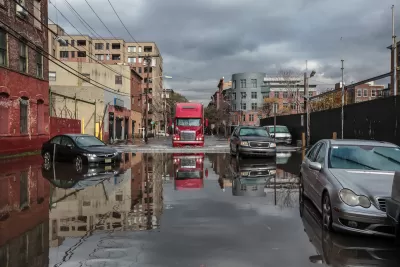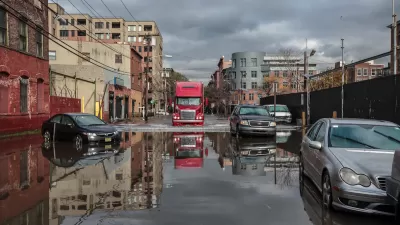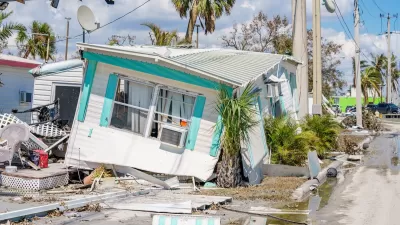The document is designed to guide federal investment into community-driven solutions tailored to local conditions and needs.

A newly released federal plan seeks to address climate resilience at the national level while focusing in on locally tailored solutions, reports Ysabelle Kempe in Smart Cities Dive.
“The ‘National Climate Resilience Framework’ identifies the federal government’s six overarching climate resilience goals and provides specific actions that could be taken to accomplish them.” The framework is intended to guide the investment of federal funding to go beyond “traditional disaster response” and build resilience for the future.
The document sets out goals such as “Embed climate resilience into planning and management,” “Increase resilience of the built environment to both acute climate shocks and chronic stressors,” and “Equip communities with information and resources needed to assess their climate risks and develop the climate resilience solutions most appropriate for them.”
The plan was announced along with a $500 million investment in climate resilience distributed to various federal agencies. “For example, the Energy Department will get nearly $168 million for electric grid modernization and the Labor Department will get $16 million to create climate resilience jobs in underserved communities.”
FULL STORY: National climate resilience plan unveiled by Biden administration

Study: Maui’s Plan to Convert Vacation Rentals to Long-Term Housing Could Cause Nearly $1 Billion Economic Loss
The plan would reduce visitor accommodation by 25,% resulting in 1,900 jobs lost.

North Texas Transit Leaders Tout Benefits of TOD for Growing Region
At a summit focused on transit-oriented development, policymakers discussed how North Texas’ expanded light rail system can serve as a tool for economic growth.

Why Should We Subsidize Public Transportation?
Many public transit agencies face financial stress due to rising costs, declining fare revenue, and declining subsidies. Transit advocates must provide a strong business case for increasing public transit funding.

How to Make US Trains Faster
Changes to boarding platforms and a switch to electric trains could improve U.S. passenger rail service without the added cost of high-speed rail.

Columbia’s Revitalized ‘Loop’ Is a Hub for Local Entrepreneurs
A focus on small businesses is helping a commercial corridor in Columbia, Missouri thrive.

Invasive Insect Threatens Minnesota’s Ash Forests
The Emerald Ash Borer is a rapidly spreading invasive pest threatening Minnesota’s ash trees, and homeowners are encouraged to plant diverse replacement species, avoid moving ash firewood, and monitor for signs of infestation.
Urban Design for Planners 1: Software Tools
This six-course series explores essential urban design concepts using open source software and equips planners with the tools they need to participate fully in the urban design process.
Planning for Universal Design
Learn the tools for implementing Universal Design in planning regulations.
City of Santa Clarita
Ascent Environmental
Institute for Housing and Urban Development Studies (IHS)
City of Grandview
Harvard GSD Executive Education
Toledo-Lucas County Plan Commissions
Salt Lake City
NYU Wagner Graduate School of Public Service





























